It is vital that employers contribute the right amount of mandatory CPF for their employees based on the actual wages paid. As part of the checks for eligibility of government payouts, a small number of employers will receive letters from IRAS asking them to conduct a self-review of their CPF contributions and to provide declarations or documents to substantiate their eligibility for the payouts and/or report errors to IRAS on mandatory CPF contributions made to employees. Their payouts will be withheld pending the self-review and verifications by IRAS, and will be disbursed thereafter based on the outcome of the review.
Employers that have been selected for review are required to perform the following steps:
- Self-review of mandatory CPF contributions made for your employees
For March 2024 PayoutIf you have been selected to conduct a self-review of your eligibility for SEC/EEC/CTO, you would need to check whether there are any errors pertaining to your employees’ mandatory CPF contributions for the months of July 2023 to December 2023.
If you have been selected to conduct a self-review of your eligibility for PWCS, you would need to check whether there are any errors pertaining to your employees’ mandatory CPF contributions for the year 2023 (January 2023 to December 2023).
You may wish to refer to the illustrations provided below on examples of scheme abuses.
- Correction of Errors
If you identify any errors during the self-review, you should make the relevant CPF adjustments below for errors made no later than one year from the date of CPF contributions and disclose the errors as requested in Sections 3 and 4:
a) For Refund
Please select ‘Refund of CPF Contributions Paid’ RFM/Form 40 at: https://www.cpf.gov.sg/eSvc/Web/Services/RefundOfCpfContributionsPaid/LandingPage
b) For Adjustment
Please select ‘Application for Adjustment of CPF Payment’ (ER_DMS_REQ01) at: https://www.cpf.gov.sg/eSvc/Web/Schemes/AdjustmentOfCpfPayment/Home - Submission of Self-review Declaration
For March 2024 PayoutIf you have been selected for self-review for: Please submit your Declaration of Review via: SEC/EEC/CTO - go.gov.sg/sec-eec-cto-mar24
as stated in the self-review letter sent to you.
PWCS - go.gov.sg/pwcsdeclare24
as stated in the self-review letter sent to you.
Please note that only declarations made by either the Business Owner (for sole-proprietorships or partnerships) or ACRA-registered Director (for companies) will be accepted.
- go.gov.sg/sec-eec-cto-mar24
- Disclosing Errors Discovered
If there are any errors discovered, please list the details of errors made in accordance with the format below and submit it with your declaration of self-review.Self-review for Format to list errors SEC/EEC/CTO SEC_EEC_CTO Annex B_Declaration of Error PWCS PWCS Annex B_Declaration of Error
Illustrations of Unacceptable Practices
IRAS has observed the following instances of unacceptable practices where employers engage in arrangements to alter their CPF contribution data, such that the data do not correspond with employees’ wages. As the payouts are automatically computed based on CPF contribution data, these employers then stand to gain a higher amount of the cash subsidy than due to them.
Example 1: Making mandatory CPF contributions for non-genuine employees
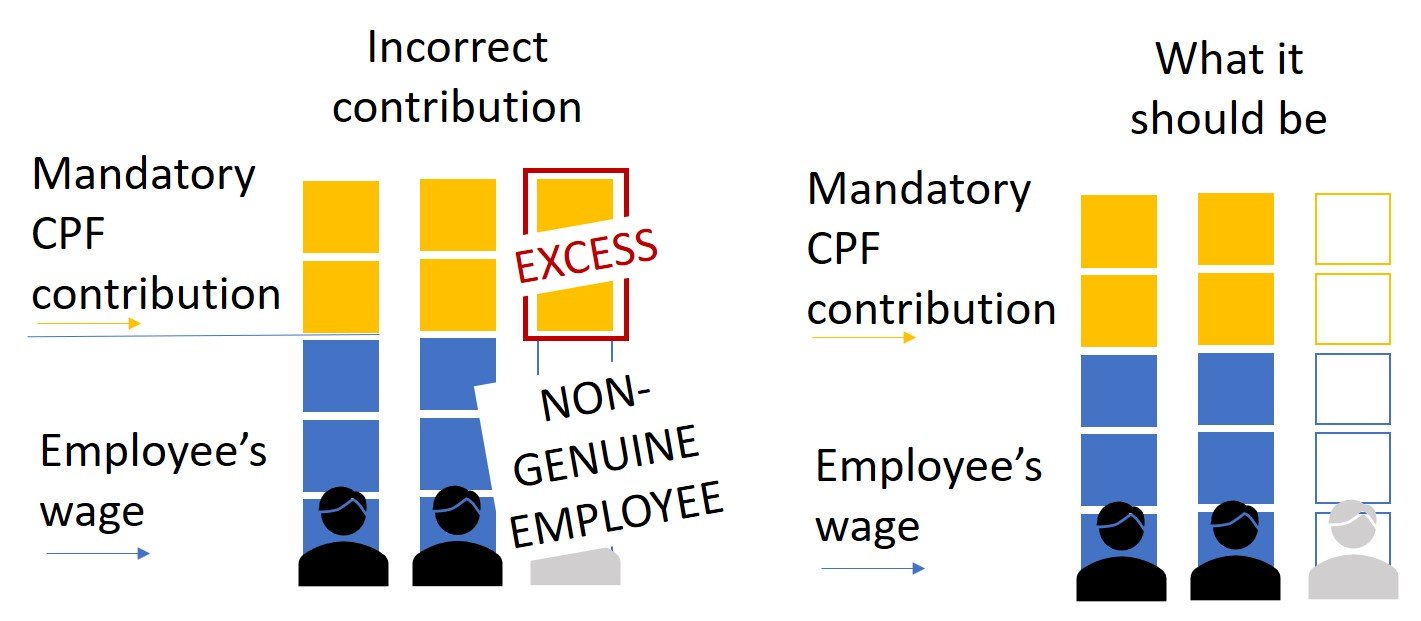
This is a fraudulent arrangement. Employers should not make any mandatory CPF contributions to individuals who are not their genuine employees.
Individuals are reminded that providing their personal information to some employers to facilitate such schemes may make them accomplices to the fraud, resulting in criminal liability for the individuals.
Individuals should not give out their personal information such as NRIC, Singpass or bank account details in exchange for CPF contributions and/or money.
Example 2: Continuing mandatory CPF contributions for employees whose employment has been ceased or put on no-pay leave
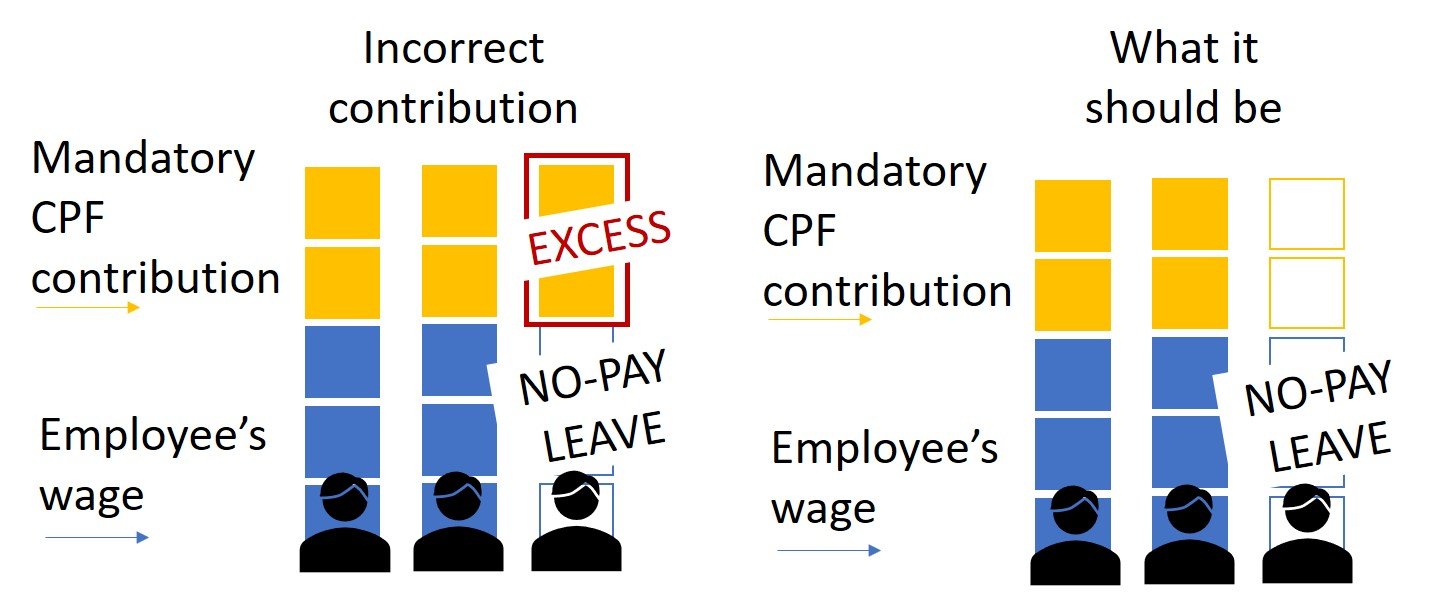
Employers should stop making mandatory CPF contributions for employees who have been retrenched or are on no-pay leave.
However, employers can continue to make voluntary CPF contributions to the CPF accounts of employees on no-pay leave by applying
for a separate CPF submission number with CPF Board.
(For more details on making voluntary CPF contributions for employees, please find out more at the CPF Board website).
Example 3: Maintaining mandatory CPF contribution amounts based on past wages for employees who have suffered wage cuts
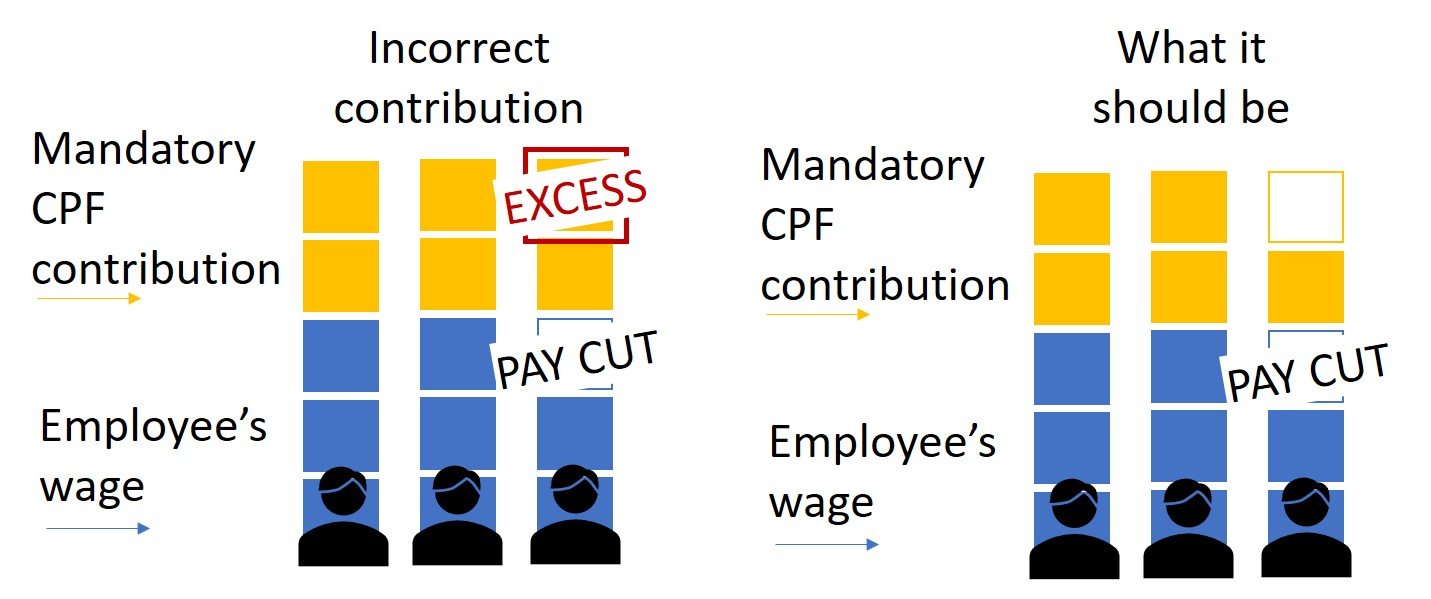
CPF mandatory contributions are based on employees’ wages, age and citizenship. A wage cut on the employees’ part should see a corresponding decrease in the CPF contribution.
However, employers can continue to make voluntary CPF contributions to the CPF accounts of employees whose wages have been cut by applying for a separate CPF submission number with CPF Board.
(For more details on making voluntary CPF contributions for employees, please find out more at the CPF Board website)
Example 4: Increasing CPF contributions for employees without any actual wage increase
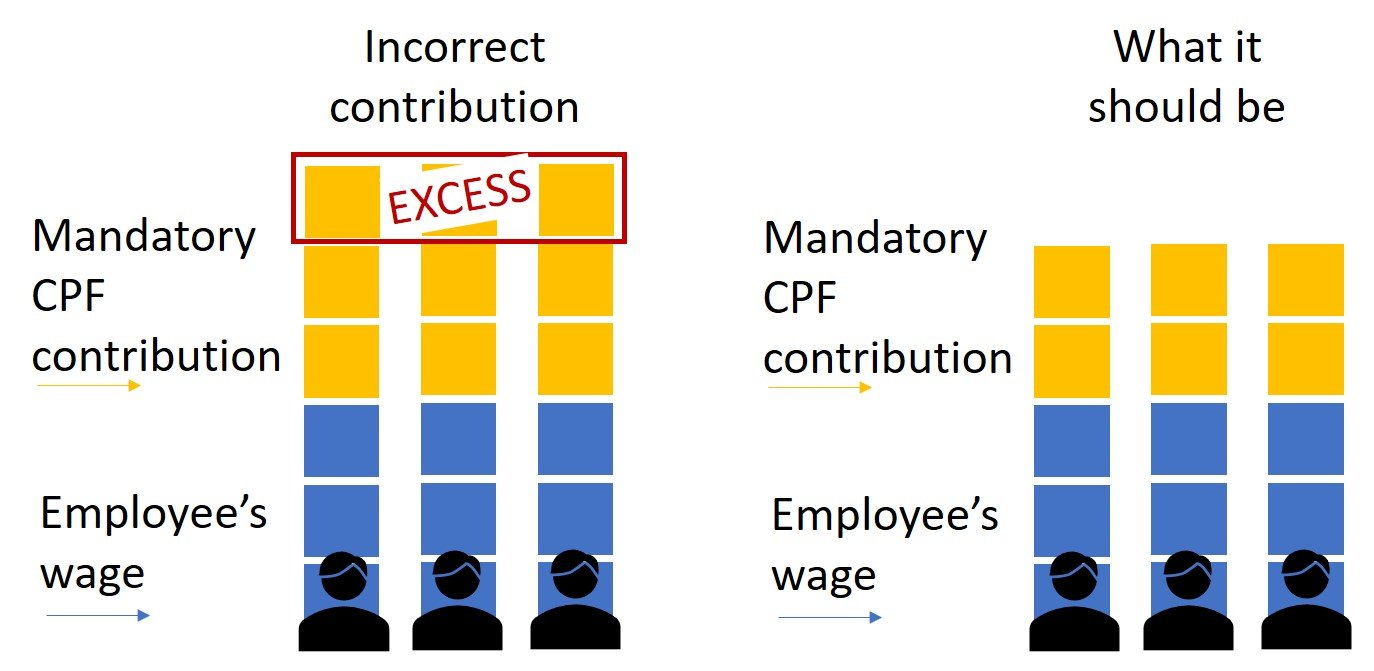
CPF mandatory contributions are based on employees’ wages, age and citizenship. The prevailing CPF contribution rates can be found on the CPF website.
Example 5: Inflating mandatory CPF contributions and deducting these excess contributions from employees’ wages in cash
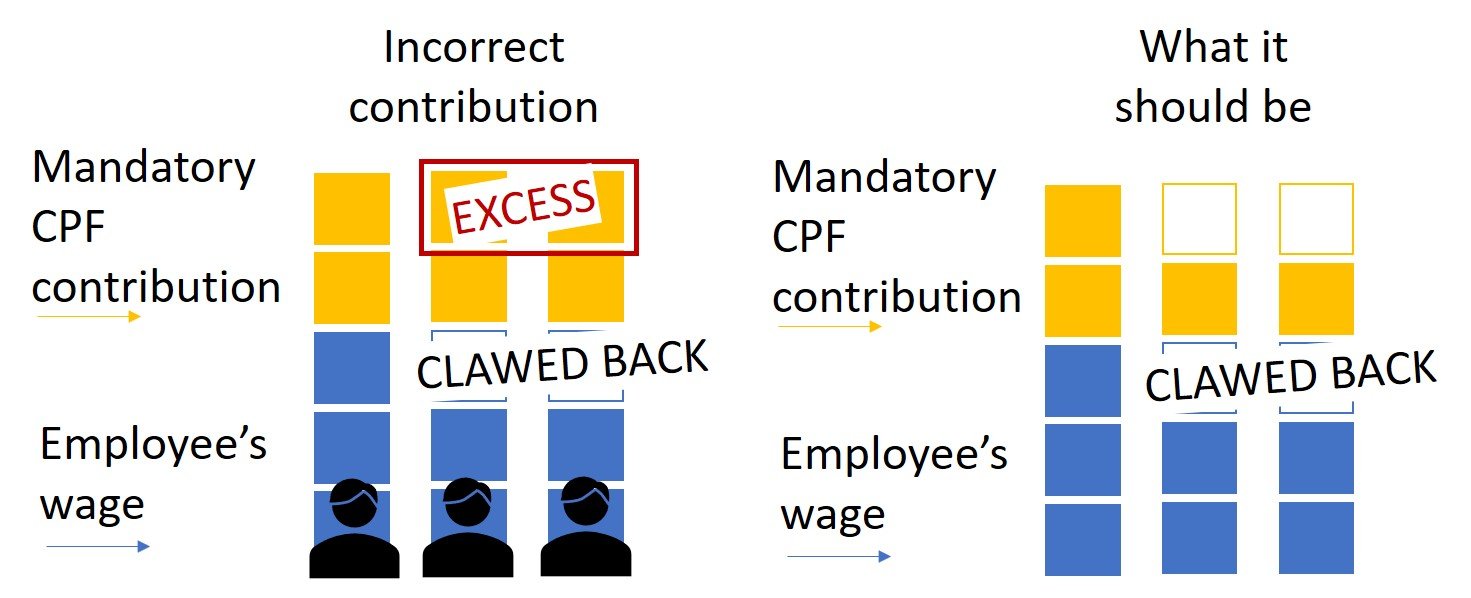
This is a fraudulent arrangement. Employers should only make the correct amount of mandatory CPF contributions based on the actual wages paid to their employees.
Example 6: Making purported mandatory CPF contributions for purported wages paid without expectation of any work to be done (e.g. solely to fulfill regulatory requirements or quotas, or family members who are not involved in the business)
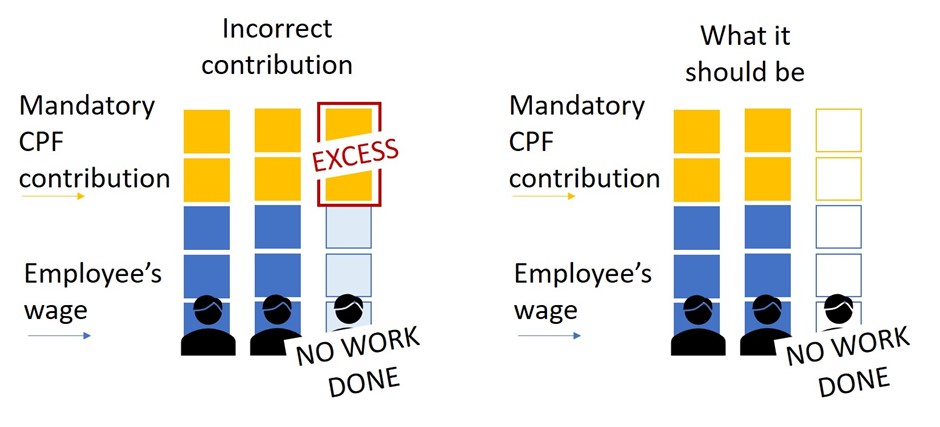 Employers should only make mandatory CPF contributions to employees for wages paid for work performed as part of a contract of service.
Employers should only make mandatory CPF contributions to employees for wages paid for work performed as part of a contract of service.
Example 7: Making purported mandatory CPF contributions for wages that are not commensurate with the volume or nature of work of the employees
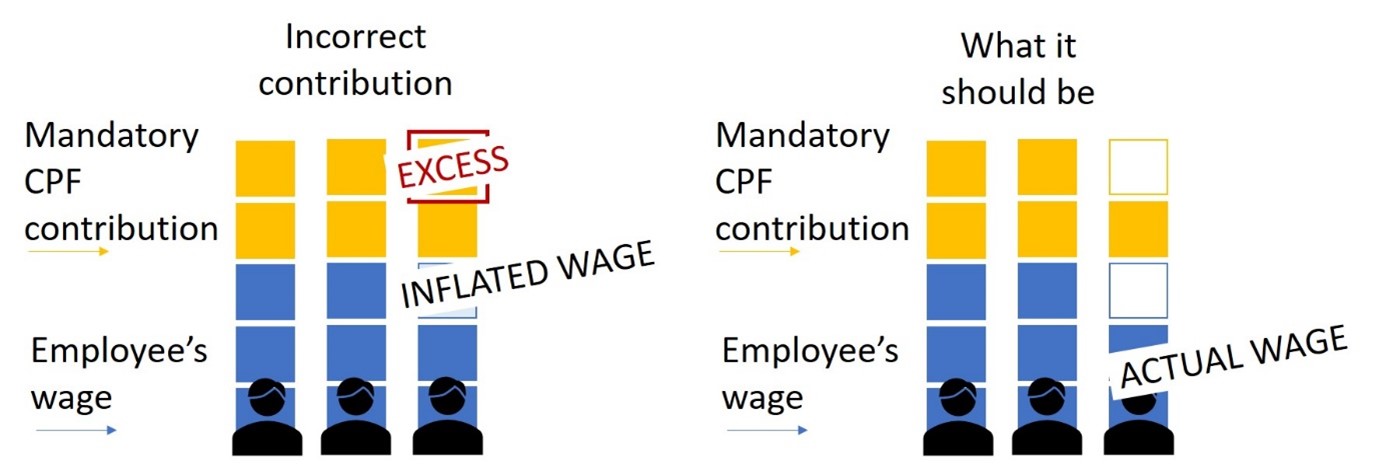
Employers should only make mandatory CPF contributions to employees for wages paid that are commensurate with the volume or nature of work of the employees, instead of making purported mandatory CPF contributions based on inflated wages to increase the amount of subsidy.
Example 8: Artificially splitting the wages of employees across multiple related business entities
.png?sfvrsn=f3341a5f_3)
Employers should only make mandatory CPF contributions to employees for the business entities they are working for, instead of artificially splitting the wages of its employees across related business entities to circumvent the wage ceiling for the respective schemes.


